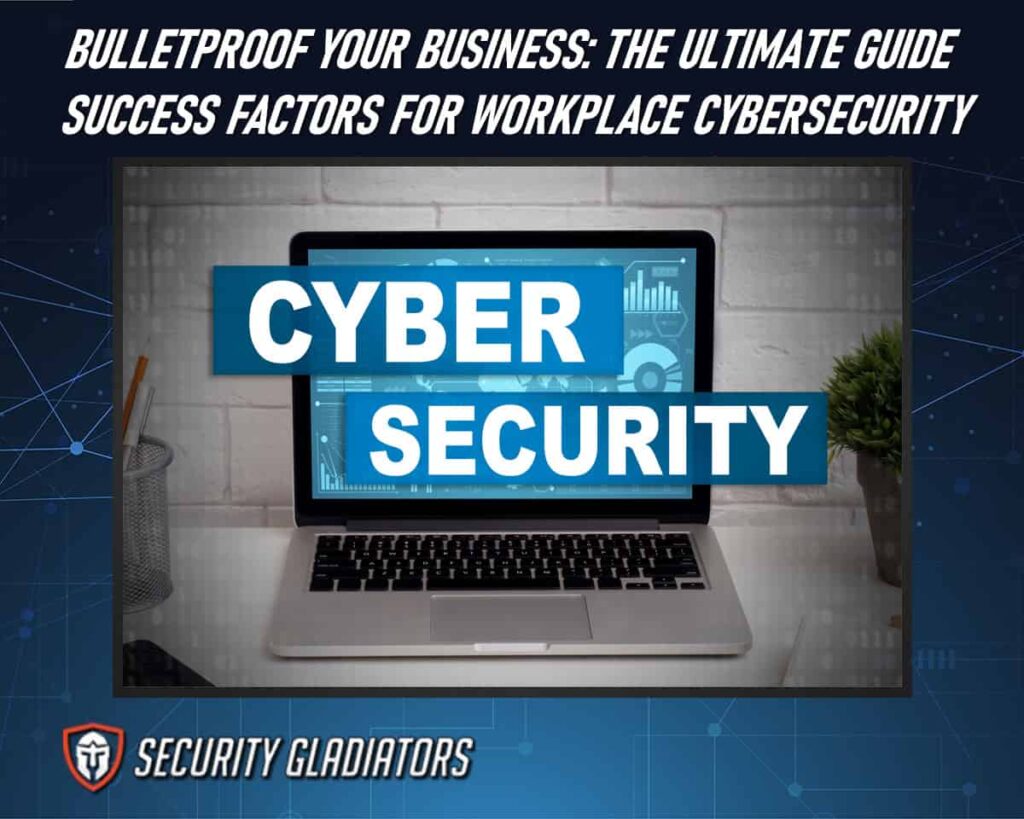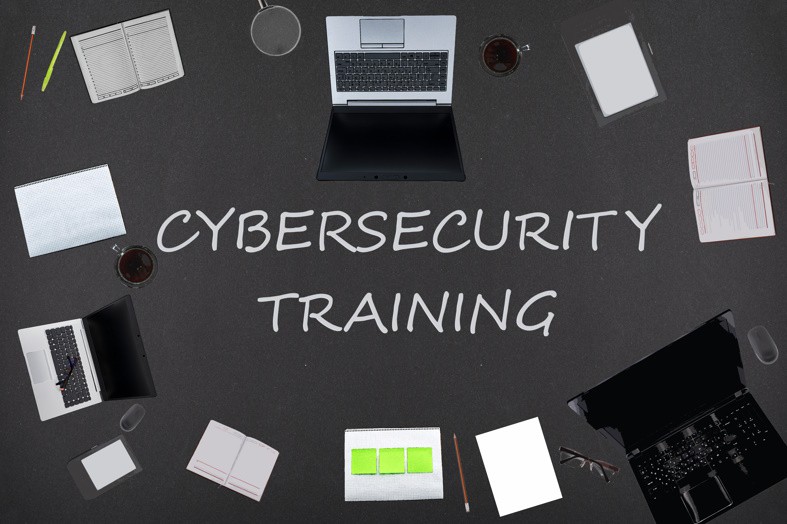
Table of Contents
Why Cybersecurity Is Important in the Workplace?
Cybersecurity is crucial in the workplace for several compelling reasons:
Protection of Sensitive Data
Workplaces often handle sensitive information such as financial data, personal employee information, customer data, and proprietary business data. Without proper cybersecurity measures, this information is vulnerable to theft, unauthorized access, and misuse.
Prevention of Data Breaches
Data breaches can result in significant financial losses, damage to reputation, and legal consequences. Cybersecurity measures help prevent unauthorized access, hacking attempts, and data breaches that can compromise the integrity and confidentiality of sensitive information.
Maintenance of Business Continuity
In the event of a cyberattack or security breach, the operational continuity of a business can be disrupted. Proper cybersecurity measures help ensure that essential systems and processes remain functional even in the face of cyber threats, minimizing downtime and maintaining productivity.
Protection from Malware and Viruses
Malicious software, including viruses, ransomware, and malware, can quickly spread through a network and wreak havoc. Effective cybersecurity practices, such as up-to-date antivirus software and regular security patches, help prevent such threats from infiltrating the workplace’s systems.
Safeguarding Financial Resources
Cyberattacks can lead to financial losses due to theft, fraud, and the costs associated with mitigating the aftermath of an attack. Investing in cybersecurity measures can help safeguard the financial well-being of a business by reducing the risk of financial fraud and loss.
Compliance with Regulations
Many industries have specific regulations and compliance standards regarding data protection and cybersecurity. Failing to meet these standards can result in legal penalties and fines. Implementing effective cybersecurity practices ensures that the workplace remains compliant with relevant regulations.
What Are the Success Factors for Workplace Cybersecurity
Below are the factors that organizations should consider for cybersecurity success:
1. Encouraging Employee Training
Employee training plays a crucial role in equipping individuals with the necessary knowledge and skills to mitigate risks and protect organizational assets. To ensure workplace cybersecurity, it is essential to prioritize employee training programs that foster security awareness.

Here are four key components of effective employee training for cybersecurity:
Basic Cybersecurity Principles
Security teams should educate employees about fundamental cybersecurity principles such as password hygiene, identifying phishing attempts, and safe browsing practices. This foundational knowledge helps employees understand the importance of their actions in maintaining a secure work environment.
Technology Training
Providing comprehensive training on the organization’s specific technological tools and systems enables employees to utilize them securely. This includes understanding how to set up secure passwords, use encryption technologies, and properly handle sensitive data.
Incident Response Training
Employees should be trained on how to respond promptly and effectively when faced with a potential cybersecurity incident or breach. This includes recognizing warning signs, reporting incidents promptly, and following established protocols for containment and resolution.
Continuous Education
Cybersecurity threats evolve rapidly, making ongoing education critical to staying ahead of emerging risks. Regularly updating employee training programs ensures that employees are aware of new threats, vulnerabilities, and best practices for safeguarding organizational data.
2. Understanding Common Cyber Threats
Understanding cyber threats is crucial for organizations to effectively mitigate cybersecurity risks and protect their sensitive data. Cybersecurity threats are constantly evolving, with new techniques and tactics being employed by malicious actors. These threats can manifest in various forms, such as phishing attacks, malware infections, ransomware incidents, or data breaches. Organizations must be aware of these security threats and vulnerabilities to proactively implement robust security measures and protocols. By staying informed about the latest trends in cybercrime and understanding the potential impact of security incidents, organizations can better defend against cyber threats and safeguard their critical assets.
3. Regular Security Audits
Regular security audits play a crucial role in ensuring the effectiveness of an organization’s cybersecurity measures and identifying potential vulnerabilities or weaknesses in its systems. It is a way of risk management and system monitoring. These audits, conducted regularly and systematically, allow organizations to assess their cybersecurity management practices and ensure that they align with their security objectives. By conducting regular security audits, organizations can identify any gaps or shortcomings in their existing cybersecurity measures and take appropriate actions to address them. This proactive approach helps prevent cyber threats before they occur, reducing the risk of data breaches or unauthorized access.

Note:
Successful implementation of regular security audits requires several critical success factors, including clearly defined objectives for the audit process, involvement of key stakeholders from various departments, and utilization of advanced tools and technologies for comprehensive vulnerability assessments. Additionally, these audits should be followed by a thorough analysis of the findings to prioritize remediation efforts effectively.4. Establishing Security Protocols
Establishing security protocols involves implementing a comprehensive framework that encompasses procedural guidelines, strict access controls, and robust encryption mechanisms to fortify an organization’s digital perimeter against potential cyber threats. In the realm of workplace cybersecurity, the success factors for establishing security protocols lie in the hands of senior management within organizations. It is crucial for senior management to prioritize cybersecurity and allocate sufficient resources to ensure its implementation throughout the entire organization.
This includes establishing clear policies and procedures that outline acceptable use of technology, defining roles and responsibilities related to information security, and conducting regular training programs to educate employees about best practices. Additionally, organizations should enforce strict access controls by implementing multi-factor authentication and role-based access controls to limit unauthorized access to sensitive data. Furthermore, robust encryption mechanisms such as secure socket layer (SSL), virtual private networks (VPNs), and strong cryptographic algorithms should be employed to protect data in transit and at rest.
5. Secure Remote Access
Senior management’s commitment to prioritizing secure remote access is essential for organizations to establish a strong cybersecurity posture. Secure remote access refers to the ability of employees to securely connect and access company resources remotely, such as through virtual private networks (VPNs) or other secure methods. A robust cybersecurity strategy should include measures that authenticate users, encrypt data transmission, and enforce strict access controls. By implementing secure remote access protocols, organizations can mitigate the risk of cyber threats and safeguard their valuable assets from potential breaches or attacks.
6. Employee Security Awareness Training
To cultivate a culture of cyber resilience, organizations must prioritize employee awareness to enhance their understanding of potential threats and develop the necessary skills to identify and respond to them effectively. Employee awareness plays a crucial role in strengthening an organization’s cybersecurity posture. By educating employees about the importance of cybersecurity and the risks associated with it, organizations can empower them to actively participate in safeguarding sensitive information.
7. Anticipate the Worst, Plan for Recovery
Anticipating the worst and planning for recovery is essential in building a resilient cybersecurity infrastructure, akin to fortifying the walls of a castle to withstand potential attacks. This proactive approach involves preparing for various scenarios and establishing protocols to mitigate damage and restore operations in the event of a cyber incident.
To effectively anticipate the worst and plan for recovery in workplace cybersecurity, organizations should consider the following success factors:
Incident Response Plan
Developing a comprehensive incident response plan is crucial to ensure a swift and effective response when a cyberattack occurs. This plan should outline clear roles, responsibilities, and procedures for all stakeholders involved in managing an incident.
Regular Backups
Implementing regular data backups can help minimize data loss in case of an attack or system failure. These backups should be stored securely offsite or using cloud services to ensure accessibility during recovery processes.
Testing and Simulations
Conducting regular testing and simulations of different cyber-attack scenarios can help identify vulnerabilities within the organization’s systems. By simulating real-world situations, organizations can assess their readiness level, identify weaknesses, and refine their incident response plans accordingly.
Continuous Monitoring
Employing robust monitoring tools that provide real-time threat intelligence allows organizations to detect potential threats early on. Continuous monitoring helps identify suspicious activities, enabling timely action before an attack escalates into a major security breach.
Frequently Asked Questions
How Can Workplace Cybersecurity Measures Be Implemented Effectively?
Effective workplace cybersecurity measures can be implemented by adopting a multi-layered approach that includes employee training to enhance awareness of phishing and social engineering threats, implementing robust access controls and authentication mechanisms to limit unauthorized access to sensitive systems and data, regularly updating and patching software and systems to address known vulnerabilities, deploying up-to-date antivirus and anti-malware solutions, regularly monitoring network traffic and system logs for suspicious activities, establishing incident response plans to swiftly address and mitigate security breaches, and fostering a culture of cybersecurity awareness and accountability across all levels of the organization.
How Often Should Security Audits Be Conducted in the Workplace?
The frequency of security audits in the workplace depends on factors such as the industry, regulatory requirements, and the organization’s risk profile. Generally, security audits should be conducted at least annually to assess the effectiveness of cybersecurity measures, identify vulnerabilities, and ensure compliance with relevant regulations. More frequent audits might be necessary for industries with higher security risks, rapidly evolving threats, or significant changes to the IT infrastructure. Additionally, conducting occasional surprise audits or vulnerability assessments can provide valuable insights into the organization’s security posture and help maintain a proactive stance against emerging cyber threats.
How Often Should Workplace Cybersecurity Training Be Conducted?
Workplace cybersecurity training should be conducted regularly, ideally at least once a year, to keep employees updated on the latest threats and best practices. However, it’s also valuable to provide ongoing reminders, updates, and additional training sessions when there are significant changes in the threat landscape or the organization’s technology infrastructure.
Conclusion
As the digital landscape continues to evolve, organizations must remain vigilant and proactive in safeguarding their assets, sensitive data, and operational integrity. By fostering a culture of cyber security awareness, implementing state-of-the-art defense mechanisms, and staying abreast of emerging threats, businesses can position themselves at the forefront of cybersecurity resilience. The fusion of cutting-edge tools, continuous education, and a shared commitment to cyber hygiene will not only ensure protection against existing and future threats but also empower a secure and productive work environment for all.

